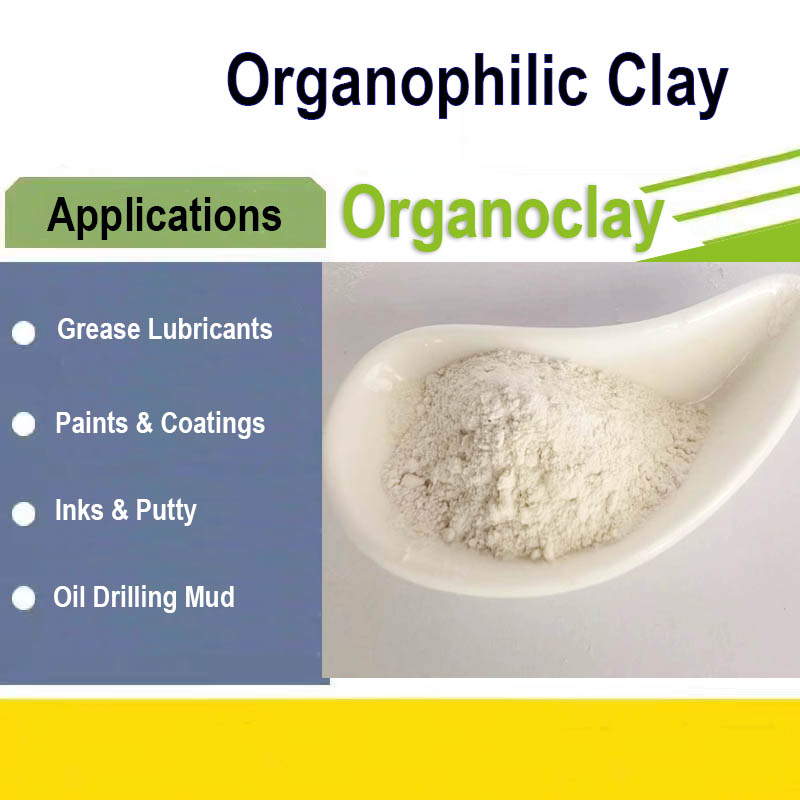Organoclay in Paint as Suspending Agent
Organoclay in Paint : By increasing the viscosity of the paint, organoclay assists in achieving the desired flow and leveling properties. This control over viscosity is essential for paint applications, as it influences factors such as brushability, drip resistance, and film formation. The presence of organoclay allows the paint to have a thicker consistency, enabling better control during application and reducing the occurrence of drips or runs.
Organoclay can be used in various types of paints, including water-based and solvent-based systems, providing stability across different mediums. This adaptability makes Organoclay a preferred choice for paint manufacturers seeking reliable suspending agents.
Organoclay in Paint & Coatings
Organoclay is a valuable component in the formulation of water-based and solvent based paints and coatings. Its use in in achieving stable emulsions contributes to improved stability, rheology, and overall performance of the final paint product.
Organoclay in Paints and Coatings in Water base
Water is a common medium used in water-based paints, and maintaining the appropriate pH level is essential for optimal performance. Typically, a pH range of 7.0 to 8.0 is considered ideal for water-based paints. Organoclay are dispersible in water inside that pH range.
During the paint manufacturing process, dispersing the ingredients at high speed for a period of 20 to 30 minutes is often necessary. This high-speed dispersing aids in breaking down any agglomerates and achieving a homogeneous mixture.
When formulating water-based paints, emulsions are commonly used to disperse binders and other components. Proper mixing of emulsions is essential to ensure the stability and effectiveness of the paint. Using organoclay in water-based paints enables formulators to do post-correction. Adjustments can be made by incorporating additional additives or modifying the amount of organoclay to achieve the desired results.
Solventborne Paints and Coatings
Solventborne paints and coatings are liquid protective layers that consist primarily of organic compounds. They are widely used to protect various materials’ surfaces from corrosion, providing durability and aesthetic appeal. Bentonite organoclay can offer valuable benefits in solventborne paint formulations, particularly in terms of weather protection and defect coverage.
Bentonite organoclay functions as a filler, helping to fill in small imperfections, cracks, or surface irregularities, resulting in a smoother and more aesthetically pleasing finish. Organoclay serves as a valuable dispersion agent in solvent-based paints and coatings, particularly in applications involving acrylic resin. It disperses the acrylic resin evenly throughout the paint formulation for a uniform distribution.
Studies on Organoclay in Paint work Materials
The impact strength of a coating refers to its ability to resist damage and deformation when subjected to external forces, such as impacts or collisions. Polystyrene coatings are widely used in various industries due to their excellent thermal and mechanical properties.
By incorporating organoclay-based additives into polystyrene paint coatings, there is a substantial improvement in impact strength. Organoclays consists of layered mineral structures modified with organic surfactants. It possesses unique properties that can reinforce the coating matrix. The intercalation of organoclays within the polymer matrix increases the material’s ability to absorb and distribute the energy from impacts, thereby enhancing its impact resistance.
The cohesive strength of a coating is vital for its durability and longevity. Organoclay-based additives have demonstrated the ability to enhance the cohesive strength of polystyrene coatings. The incorporation of organoclays in the coating formulation improves the interfacial bonding between the polymer matrix and the filler. This improved cohesion helps to reduce cracking, delamination, and other forms of coating failure.
Textured Paints and Paints in Thick Layer
Organoclays offer convincing anti-settling characteristics and contribute to the long-term storage stability of textured paints and paints applied in thick layers. These additives help in developing a strong elastic structure that prevents or controls pigments from settling.
One of the reasons clays and organoclays are effective in combating settling is their ability to develop a strong elastic structure when at rest. This structure acts as a barrier and impedes the settling of pigments over time. By creating a network of particles, clays and organoclays maintain the suspension of pigments and prevent them from settling to the bottom of the container.
It is important to strike the right balance in the rheological properties of organoclays in paint formulation. While a high storage modulus is desirable to prevent settling, it should not be excessively high as it can lead to syneresis. Syneresis is the separation of liquid from a gel or semi-solid material, resulting in the formation of a layer of liquid on the surface.
Organic Modification of Bentonite and its Effect on Rheological Properties
As mentioned before, bentonite is a clay mineral that consists predominantly of montmorillonite, known for its ability to swell and form gel-like structures when dispersed in water. Sometimes its rheological properties may not be suitable for certain applications. That’s why bentonite clay is modified to turn it into a white powdered form named organoclay.
The organic modification process introduces hydrophobic groups onto the clay surface, leading to improved dispersibility and compatibility with organic solvents or binders. Organic bentonites act as thickening agents, increasing the viscosity of the coating formulation. This enhanced viscosity provides better control over the flow and leveling of the coating during application for uniform coverage and reducing the likelihood of drips or runs.
Organoclay bentonite has been characterized as pseudoplastic fluid. It exhibits a non-Newtonian behavior. It makes the viscosity decreases as shear rate increases. This property allows for easier application and spreading of the coating during painting or coating processes. The pseudoplastic flow behavior ensures that the coating flows smoothly under shear stress, facilitating the formation of a uniform and thin coating layer on the paper surface.


